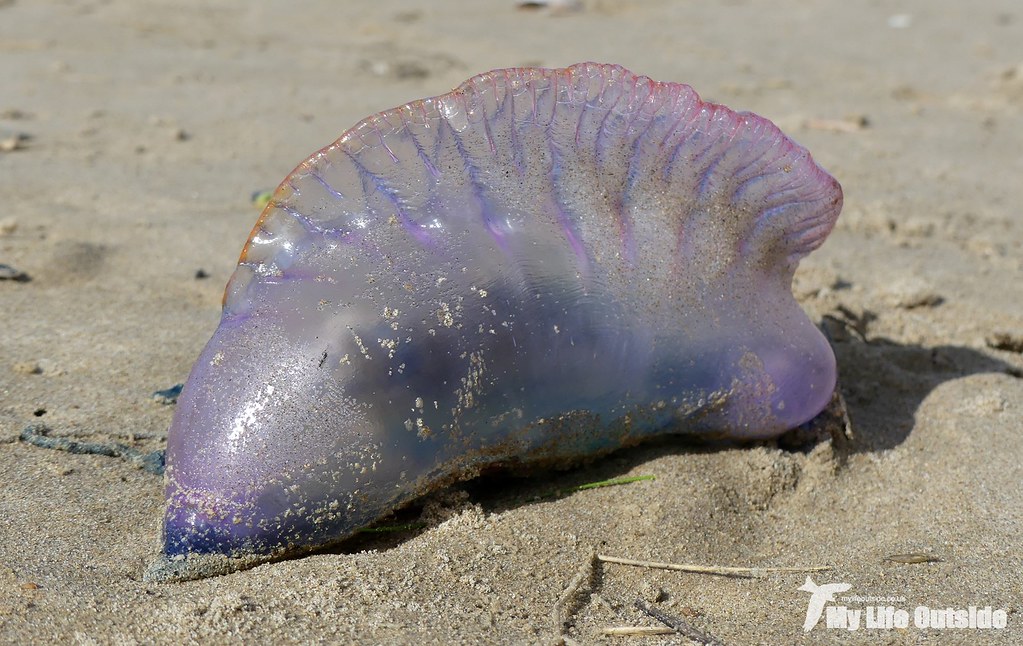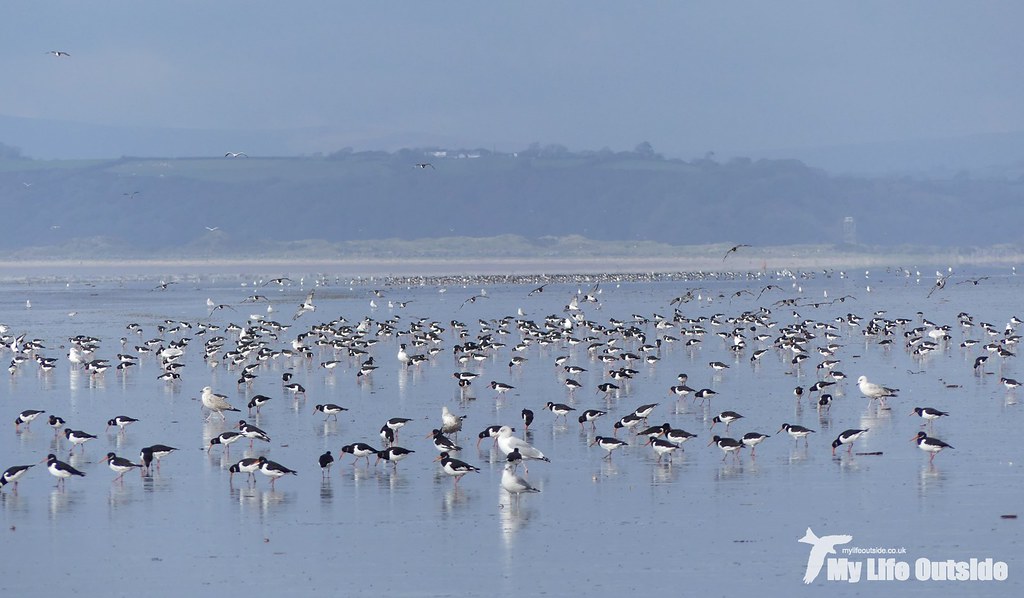We were back on the hunt for a Portuguese man-of-war come Sunday, our efforts refocussed on Cefn Sidan. The thinking went, rightly or wrongly, that with these creatures moving in from the south-west perhaps a beach facing in that general direction might prove more productive than we’d found Whiteford the day before. Warning signs at the car park hinted strongly that we might be in luck and it only took a few minutes of walking the high tide line to turn up our first ever man-of-war on British shores.

Smaller than I’d expected at a little over six inches in length these are quite beautiful creatures in the flesh, but don’t drop your guard on that account. They are known for having an incredibly painful sting which can prove fatal even after the man-of-war itself has died. Add in trailing tentacles measuring somewhere between ten and thirty meters and it’s easy to see why walking barefoot in these areas is currently strongly discouraged. Not that people seemed to be taking much notice of course but then again, why would they? We’re so unused in this country to living things which can cause us harm that perhaps the seriousness of the threat isn’t fully understood. It would certainly explain why we saw at least three dogs being walked off the lead along the exact line where the man-of-wars were washed up. And I do use the plural here for good reason as in less than two miles we counted a further five individuals though there were likely many more dotted across this vast stretch of sand.


So what of the Portuguese man-of-war’s themselves? Dangerous yes but as is so often the case fascinating in equal measure. Until researching this post for instance I’d incorrectly been referring to them as jellyfish but they are in fact a member of the siphonophore family, not single multicellular organisms but a colony consisting of seven distinct animals working together. Each is specialised to a specific task yet also linked such that none can survive alone. This means that a Portuguese man-of-war actually consists of three types of medusoids and four types of polypoids taking on such individual functions as defence, reproduction and feeding. And the intrigue doesn’t end there. That unusual name for instance comes from their resemblance to an eighteenth century armed ship at sail, an apt name given that the man-of-war’s propulsion is by wind power alone. The large air filled sack that is their most noticeable feature serves both for buoyancy and as a sail yet can be deflated should danger occur allowing brief periods of submersion. With that little bag of tricks in tow we really should be marvelling at these visitors instead of the far too predictable vilification of them seen in the press, although if they could clear off in time for next summer that would be much appreciated.

Away from our siphonophore twitch Cefn Sidan was its usual mix of big shipwrecks, bigger views and thousands upon thousands of birds. Out to sea we watched at least sixty Common Scoter collect into a raft as small flocks arrived from all corners of the bay whilst closer to home Oystercatchers lined the beach for as far as the eye could see. I was hoping for a Sanderling or two but no such luck though a couple of mewing Common Gulls were nice to see.


There were also plenty of our native and far less stingy Barrel Jellyfish washed up plus a large flock of Goldfinches waiting amongst the Sea Buckthorn to welcome our return from the sands unscathed. If you’ve not yet had chance to go and look at a Portuguese man-of-war for yourself then I highly recommend it though do take care. This may be your best chance in years though with sea temperatures rising, perhaps this is just the first sign of things to come.



1 Comment
Caroline Gill · October 16, 2017 at 10:57 am
Quite a find, Adam! I have never seen these in the flesh.